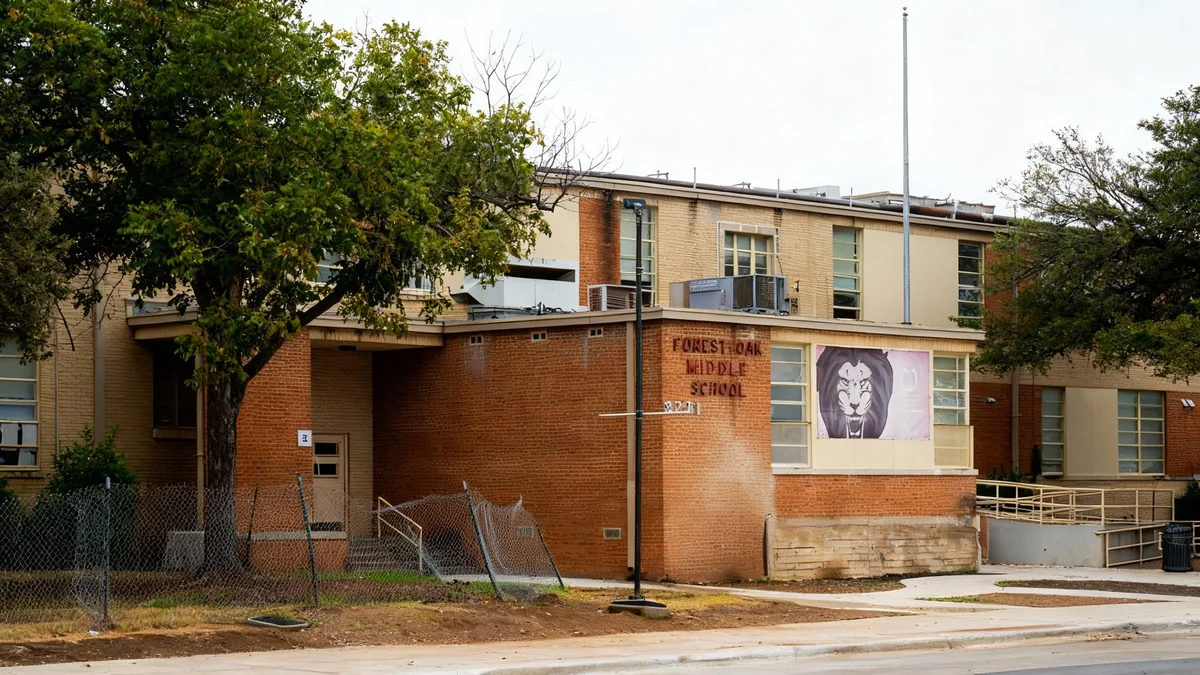Parents in the City Schools of Decatur (CSD) district are actively proposing alternatives to a potential plan to close a K-2 elementary school. Faced with declining enrollment figures, the school board's consideration of a closure has sparked a significant community response, with residents offering creative strategies focused on boosting student numbers rather than shuttering a neighborhood institution.
The proposals, which range from expanding early childhood education to forging new community partnerships, aim to address the root causes of the enrollment dip while preserving the district's highly-rated neighborhood school model. Community members argue that a closure would be a short-sighted solution to a complex problem influenced by the pandemic and rising housing costs.
Key Takeaways
- City Schools of Decatur is considering closing a K-2 school due to a recent decline in student enrollment.
- Parents have organized and presented several alternatives, arguing against what they see as a premature decision.
- Key proposals include expanding Pre-K programs, creating tuition partnerships with local employers, and enhancing the existing non-resident tuition program.
- Community members believe the current low enrollment is partly due to a temporary, pandemic-related population dip and should not be the basis for a permanent closure.
Community Responds to Enrollment Concerns
Discussions surrounding the potential closure of a K-2 school have mobilized the Decatur community. Parents have expressed frustration over the sudden nature of the conversation and what they describe as a lack of detailed data and transparent planning from the district. In response, a grassroots effort has emerged, with community members advocating to save the schools and presenting their own data-driven solutions.
One of the central arguments from parents is that the district should look at the bigger picture. Matthew Woodruff, Co-President of the Clairemont Elementary PTA, pointed out that his school has seen a drop of approximately 60 students over the past four years. However, he and others contend this dip is not indicative of a permanent trend. They attribute the decline to several factors, including the city's increasingly unaffordable housing market and the lingering effects of the COVID-19 pandemic.
Pandemic's Lingering Impact
Parents note that this year's unusually small kindergarten cohort consists of children born at the beginning of the COVID-19 pandemic. They argue this is an anomaly and not a reliable predictor for future enrollment trends, suggesting the district is at the bottom of a pandemic-induced population drop.
Expanding Pre-K to Fill Empty Seats
A leading proposal from parents is the expansion of Pre-Kindergarten programs within the existing K-2 schools. Proponents of this idea argue it would address multiple issues simultaneously. It would fill underutilized classrooms, provide a much-needed service to local families, and create a direct pipeline of students into the CSD system for kindergarten and beyond.
Parent Ariana Marin highlighted the high demand for early childhood education in the area, noting that the district's primary public option, College Heights, reportedly has a two-year waiting list. By offering Pre-K, CSD could capture families who might otherwise enroll their children in private preschools, which often retain those students for their elementary years.
"Having pre-K programs available at Clairemont and Westchester in particular would be a game changer," stated Matthew Woodruff. He believes this move would increase the appeal of CSD schools, help narrow achievement gaps, and make the district eligible for additional state and federal funding.
Adding just one or two Pre-K classrooms per school could create dozens of new learning spaces for four-year-olds almost immediately, providing a faster solution than constructing a new Early Childhood Learning Center.
Creative Partnerships and Tuition Programs
Beyond expanding Pre-K, parents are suggesting innovative ways to attract new students from outside the district's traditional boundaries. One such idea involves creating employee enrollment partnerships with major local institutions like the Centers for Disease Control and Prevention (CDC), Emory University, and Agnes Scott College.
Under this model, employees of these institutions could enroll their children in CSD schools at a discounted tuition rate. This would provide a steady stream of students from families who contribute to the local economy but may be priced out of Decatur's housing market.
Building on a Successful Pilot
CSD introduced a limited tuition program last year to fill empty seats in its K-2 schools. According to parents, the program was a success, adding at least 30 students across the district with virtually no marketing campaign. Community leaders believe a significant expansion of this program could be a key part of the solution.
Other suggestions include establishing a lottery system for nearby DeKalb County residents or forming neighborhood partnerships with adjacent communities such as Lake Claire, East Lake, and Avondale Estates.
A Call for a Forward-Looking Solution
The core message from the community is a call for creativity and long-term vision over what they perceive as a reactive measure. Parents emphasize that despite the enrollment dip, the quality of CSD schools remains exceptionally high, with all five K-2 schools maintaining top ratings across the state.
They argue that this is a moment to invest in the district's strengths and adapt to new challenges, not to dismantle a core component of the community. The parent-led movement is pushing for collaboration between the Board of Education and the City Commission to explore all available avenues before making an irreversible decision.
As the district continues its listening sessions, the focus remains on whether these community-driven proposals will be seriously considered as a viable path forward to keep all of Decatur's neighborhood schools open and thriving.





